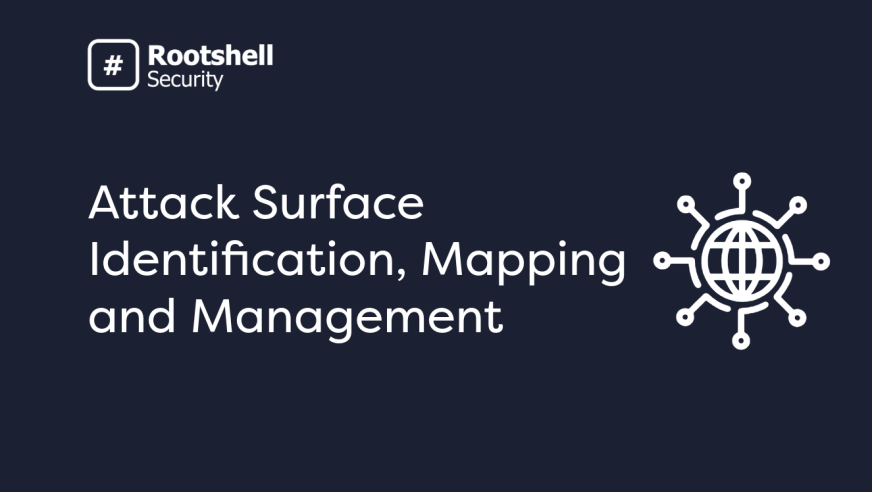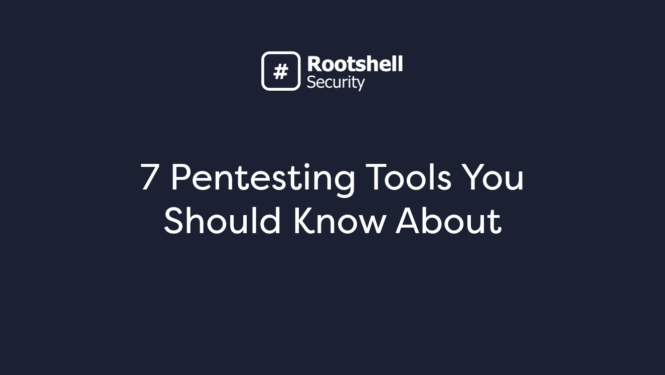Attack surface analysis is a critical component of any attack surface management (ASM) program. It provides a clear and comprehensive overview of all your assets – digital, physical, and human – that could be targeted by attackers. As a result, you’ll be able to identify potential exposure points and direct your cyber security efforts accordingly.
In this post, we’ll explain how attack surface analysis strengthens your organization’s security posture and provide a step-by-step process for implementing it.
What is Attack Surface Analysis?
Attack surface analysis is the process of mapping out all the points of entry into your systems and evaluating their potential risk to your business. Its aim is to ensure that you have an actionable picture of where, when and how attackers could try to breach your systems – and what the consequences could be.
An attack surface analysis covers every aspect of your business, from cyber assets such as cloud-based software and web applications to physical devices and servers. It also includes the various ways your employees or other individuals could compromise your systems, whether deliberately or as a result of social engineering.
By providing a truly holistic overview of your attack surface, attack surface analysis ensures your cyber security efforts are properly targeted and that you are fully prepared for any eventuality.

Why is Attack Surface Analysis Important?
Attack surface analysis offers a wide range of benefits for your organization. It enables you to:
- Identify unknown assets. Without actively mapping and analyzing your full attack surface, you will likely be overlooking a range of assets that could allow attackers to access your systems.
- Close security gaps. Attack surface analysis helps you identify the most likely points of entry into your systems and ensure you’re devoting all the necessary resources to defending them.
- Prioritize effectively. Analyzing your attack surface allows you to evaluate the threat posed by specific vulnerabilities properly, making your vulnerability prioritization efforts more effective.
- Optimize your incident response plans. A clearer picture of the most likely points of attack and the paths that threat actors could take helps you develop more effective response strategies.
- Strengthen your regulatory compliance. Regulations such as the EU’s Digital Operational Resilience Act (DORA) are demanding ever-greater efforts at protecting user data. Attack surface analysis can help you stay compliant for the long term.
Ultimately, attack surface analysis helps your organization strengthen its defences in an environment where threat actors are continually finding new ways to target your systems.
Attack Surface Analysis: 4 Key Steps
1. Asset Discovery and Categorization
The first step of attack surface analysis is to establish visibility over all assets across your organization. This ensures your analysis is fully comprehensive and that you are not at risk from shadow IT and other unknown assets.
The asset discovery process should encompass both your external and internal attack surface:
- Internal attack surface. This encompasses all the potential vulnerabilities within an organization’s internal network, systems and infrastructure. This includes everything inside the organization’s perimeter defences, such as firewalls and intrusion prevention systems.
- External attack surface. This covers all the potential vulnerabilities and entry points that are accessible from outside the organization’s network. It includes the points at which the organization’s systems and services interact with external entities, such as the internet, third-party services and remote users.
It’s also important to recognize that your attack surface extends beyond your digital assets, as important as these are. You want to ensure your asset discovery process can encompass all the various types of attack surfaces:
- Digital attack surface. Software, applications, cloud services, APIs.
- Physical attack surface. Physical devices and workstations, hardware, facilities.
- Human attack surface. Employees, contractors and other potential social engineering targets.
- Vendor attack surface. Any external partners with systems access or data connections.
By comprehensively identifying and categorizing potential entry points across these different domains, you can start to focus your security efforts on the most vulnerable parts of your network.
2. Threat Modelling and Assessment
Once your attack surface has been mapped and points of entry categorized, the next step is to identify potential attack vectors. Given the range of assets your organization uses and the specific architecture of your systems, what are the different ways a threat actor mount an effective attack?
At this stage, vulnerability assessment and threat modelling processes become paramount. You’ll need to scan for vulnerabilities and perform pen testing and red team exercises to verify their exploitability. This will help to both reveal unexpected threats and to stress-test your existing security measures.
3. Evaluating and Prioritizing Remediation
Once you’ve identified and verified any vulnerabilities, you need to assess their severity and the likelihood of their being exploited. Most organizations will face many more vulnerabilities than can realistically be remediated. CVSS scoring and other metrics can help you identify those that require urgent attention and those that aren’t likely to pose a threat.
At this stage, you can also refine your security measures based on the results of your pen testing and red team exercises. Are your incident response strategies effective? Does your security team have the resources it needs given the scope and extent of your attack surface?
4. Monitoring and Reporting
Your attack surface analysis should result in an in-depth and accurate overview of your security posture, covering all the potential threats your organization faces and your readiness to tackle them. Reporting on the results of your attack surface analysis ensures key stakeholders across your organization are fully informed about the status of your cyber security efforts.
Ideally, your analysis should also measure your performance against key cyber security metrics and service level agreements (SLAs). This will enable you to clearly demonstrate the ongoing impact of your efforts and benchmark your performance against industry standards.

Implementing an Attack Surface Management (ASM) Solution
Attack surface analysis should not be seen as one-and-done exercise. After all, your attack surface will expand and change as your digital capabilities do. New employees, new tools, new vendors and new services all result in new ways that attackers could potentially breach your systems.
With this in mind, attack surface analysis should be incorporated into an iterative process in which the outcome feeds back into the initial stage. And this is exactly what Attack Surface Management (ASM) provides.
ASM involves continuously mapping potential avenues through which attackers could infiltrate systems, assessing associated risks, and implementing measures to reduce the attack surface. ASM aims to enhance cybersecurity by minimising points of vulnerability, thereby strengthening an organization’s defences and reducing the likelihood of successful cyber attacks.

The Rootshell Security Approach to ASM
If you are looking to transform your cyber security efforts with a comprehensive Attack Surface Management (ASM) solution, Rootshell Security are your ideal partner. Rootshell couples the power of the Rootshell Platform and the pedigree of the security consultants we employ.
Here are the key points of expertise that underpin Rootshell’s approach to ASM:
- Expertise and experience. Rootshell Security boasts a team of highly skilled and experienced cybersecurity professionals. Our expertise covers a wide range of industries, technologies, and threat landscapes, ensuring that clients receive assessments tailored to their specific needs.
- Cutting-edge technology. Rootshell Security is empowered by our Platform, which also employs state-of-the-art tools and technologies to perform ASM assessments. By continuously updating our toolsets to stay ahead of emerging threats and vulnerabilities, we provide clients with accurate and up-to-date insights into their attack surface.
- Comprehensive coverage. Rootshell Security takes a holistic approach to ASM assessments, considering all potential attack points, from network and application vulnerabilities to social engineering risks. This comprehensive coverage ensures that clients gain a thorough understanding of their security posture.
- Customized solutions. We recognize that every organization is unique. We tailor the ASM assessments to align with a client’s specific business objectives, compliance requirements, and risk tolerance, providing actionable recommendations that are practical and relevant.
- Proactive risk mitigation. Beyond identifying vulnerabilities, Rootshell focuses on helping clients mitigate risks effectively. We provide actionable insights and prioritize vulnerabilities based on their potential impact and exploitability, enabling clients to address the most critical issues promptly.
- Reporting and communication. Rootshell Security delivers clear and concise reports that facilitate easy understanding of assessment findings. Our team communicates findings and recommendations in a way that empowers clients to make informed decisions and take proactive steps to enhance their security posture.
- Compliance and regulations. Rootshell Security is well-versed in industry-specific regulations and compliance requirements. Clients can rely on our expertise to ensure that the ASM assessments align with applicable standards, helping to meet regulatory obligations.
- Continuous monitoring. ASM is an ongoing process, and Rootshell offer continuous monitoring services to help clients stay ahead of evolving threats. Our proactive approach helps organizations maintain robust security in the face of ever-changing cybersecurity landscapes.
- Cost-effective solutions. Rootshell Security understands the importance of budget constraints. We offer cost-effective ASM assessment services without compromising on quality, making cybersecurity accessible to organizations of all sizes.
- Reputation and trust. Rootshell Security has earned a strong reputation in the cybersecurity industry for delivering high-quality ASM assessments. Clients can trust our expertise and commitment to securing digital assets effectively.
Choose Rootshell Security as your ASM vendor and benefit from our deep expertise, cutting-edge technology and comprehensive approach. We’re committed to helping organizations proactively manage and mitigate security risks – so why not discover more about how we can help? Book a guided demo today for an in-depth tour of our solutions.



